Because I fractured my wrist on June 7, I picked a rather large flower to dissect one handed: the yellow pond lily.
It was an interesting plant. 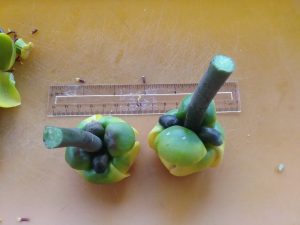 The sepals are in two rows. On each solitary flower, the outer row has 2 small, tough, thick, and leathery green sepals, and the inner row has 2 larger, soft yellow-green ones. They remind me of an artichoke. The five petals within are the same shape but, yellower and frailer. The burgundy-brown stamens, tipped with yellow anthers that curve inward are VERY numerous, arranged tightly in eight rings around the ovary. The 15 styles seem to be fused to the top of the superior ovary, at least at this time of year in a symmetrical pattern. It looks very decorative, like a clock face or pin cushion. The ovary is ribbed beneath each style line. The interior of the ovary is densely packed with eggs between the ribbed carpels. Since the eggs are the same greenish whitish color as the walls of the numerous vertical carpels, so they are difficult to distinguish in my photos. I read that the ovary explodes to release the starchy seeds. I detected no pollen dust, but did see lots of flies on each specimen. Another interesting factoid I learned is that pond lilies emit alcohol rather than carbon dioxide. This attracts the flies rather than other pollinators. The green, heart shaped leaves are large (7-11 inches) and rather leathery, with pronounced parallel ribbing on the dorsal side, like a banana leaf. The habitat is a shallow lake, within about 20 feet of shore. See photos below. I enjoyed this assignment and look forward to wielding the dissection tools on smaller specimens when I have use of both hands again.
The sepals are in two rows. On each solitary flower, the outer row has 2 small, tough, thick, and leathery green sepals, and the inner row has 2 larger, soft yellow-green ones. They remind me of an artichoke. The five petals within are the same shape but, yellower and frailer. The burgundy-brown stamens, tipped with yellow anthers that curve inward are VERY numerous, arranged tightly in eight rings around the ovary. The 15 styles seem to be fused to the top of the superior ovary, at least at this time of year in a symmetrical pattern. It looks very decorative, like a clock face or pin cushion. The ovary is ribbed beneath each style line. The interior of the ovary is densely packed with eggs between the ribbed carpels. Since the eggs are the same greenish whitish color as the walls of the numerous vertical carpels, so they are difficult to distinguish in my photos. I read that the ovary explodes to release the starchy seeds. I detected no pollen dust, but did see lots of flies on each specimen. Another interesting factoid I learned is that pond lilies emit alcohol rather than carbon dioxide. This attracts the flies rather than other pollinators. The green, heart shaped leaves are large (7-11 inches) and rather leathery, with pronounced parallel ribbing on the dorsal side, like a banana leaf. The habitat is a shallow lake, within about 20 feet of shore. See photos below. I enjoyed this assignment and look forward to wielding the dissection tools on smaller specimens when I have use of both hands again.
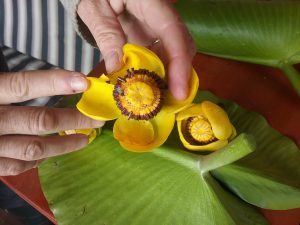
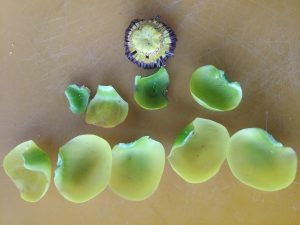
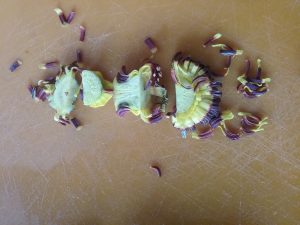
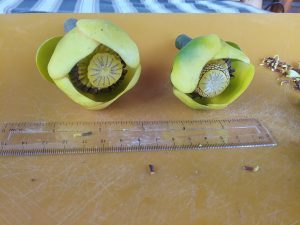
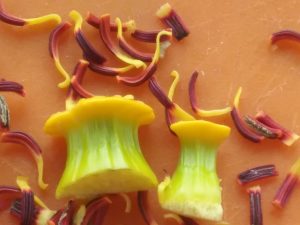
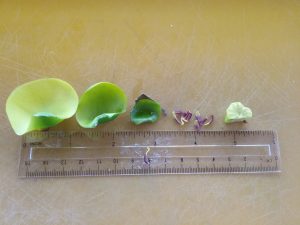


Fantastic Laura! You did great, even one-handed. Just such a nice plant to dissect! I love your pictures, they show the characters well.